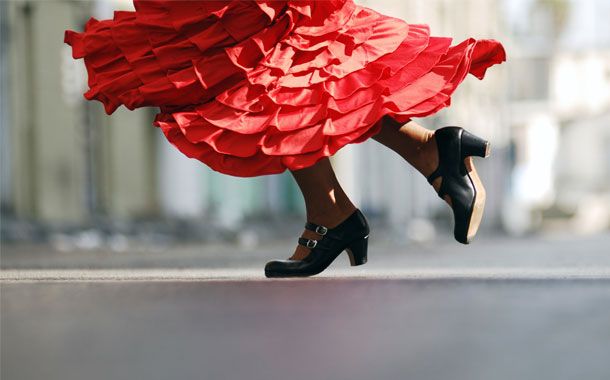Red dresses with black and white frills twirl with rapid precision. Black leather shoes delicately stomp as smooth rhythms pulsate throughout the room. You take another sip of the local red wine, and before you know it, the eternal dance on stage has ended. Everyone in the room goes from speechless to wild applause. This is the experience of Flamenco, and no trip to Spain is complete without it!
Flamenco: Then and Now
Flamenco is generally performed in four different settings. Juergas are the most informal, and this is where performers come together in various locations to improvise and enjoy themselves. Tablaos are held in smaller venues that typically offer food and drink while still providing world-class performances. Traditional concerts are more formal, and theatrical performances are found in large concert halls. As a tourist, you'll likely find tablaos to be the most enjoyable, but try multiple settings to see which excites you the most!
From Seville to Barcelona
One of the most popular places to see a classical Flamenco performance in Seville is the local Cultural Center, which hosts daily shows for both locals and tourists. For those of you who fancy a bit of history, the city's Museo del Baile Flamenco shows the progression of Flamenco over the centuries, and hosts nightly performances too.
No trip to Spain would be complete without a visit to Barcelona, where Flamenco thrives in the historic Tablao de Carmen. You'll also find unique interpretations of the dance at venues such as Club Jazz Si, which make sense when you factor in the the influence that artists such as Antoni Gaudi have had on unique interpretations of architecture across Barcelona.
Whether you're trekking in Andalusia or enjoying tapas in Barcelona, Flamenco is guaranteed to be the highlight of your trip. Don't be afraid to see more than one show, as performances differ greatly from venue to venue and region to region.
